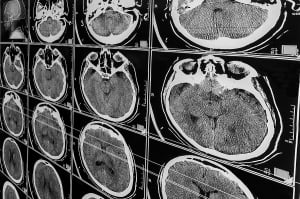The medical world is a nest of paradoxes, as whilst many hospitals are at the cutting edge of technology and rely on some of the most advanced machinery ever made, they often have a remarkable tendency to rely heavily on old technology.
This has caused some rather infamous issues for health authorities in the past, most notably when the NHS was attacked by a ransomware virus known as WannaCry in 2017 in no small part because a lot of its administration software relied on an operating system made in 2001.
One of the most unusual aspects of this reliance on the old ways is the use of compact discs to provide patients with medical images, as opposed to a more convenient and secure cloud-based system.
A lot of entry-level computers sold today do not come with a disc drive as standard, meaning that a CD is an increasingly outdated way to share patient data and can be more than a little impractical.
It often takes quite some time to request a CD and for it to be burned and made available to pick up by hand at a hospital, which can take considerable time, particularly if the patient needs that information quickly for a referral or lives some distance away from the hospital.
CDs are also quite infamously fragile; whilst they can technically run with holes in them, a slight surface scratch in the wrong place can make data unreadable, meaning they have to go through the whole lengthy process again. They can also simply be lost or be burned in an incompatible format.
Given these issues, why are they still used? It tends to be a matter of outdated thinking and an aversion to complex onboarding processes.
There is an assumption, albeit an incorrect one, that integrating a new technology into the workflow of healthcare imaging will take some time to implement, even though with the right cloud-based solution, sharing patient data records is as easy as preparing a CD and release form.
After the radical changes to telehealth seen in the early 2020s, this will doubtless change, but it is unusual that a technology from 1982 is still so relied upon over 40 years later.
 The medical industry has rapidly changed and evolved over the last year to handle the global Covid-19 pandemic. Social distancing has led to medical diagnostic work being undertaken in completely new ways to keep patients and doctors safe.
The medical industry has rapidly changed and evolved over the last year to handle the global Covid-19 pandemic. Social distancing has led to medical diagnostic work being undertaken in completely new ways to keep patients and doctors safe.